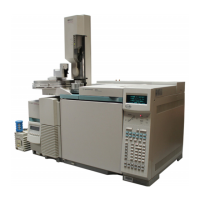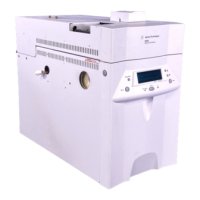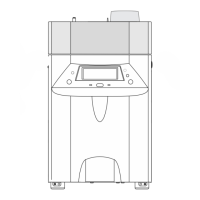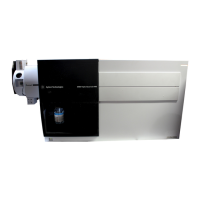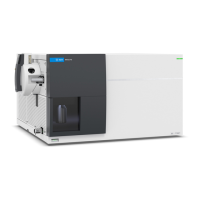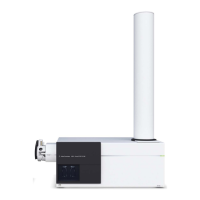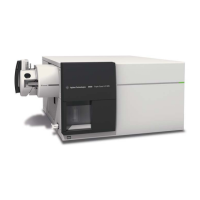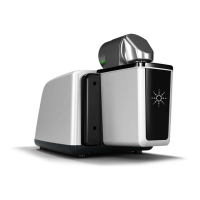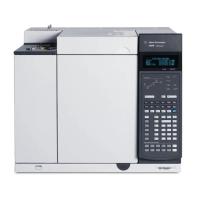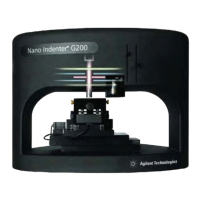Installation
Step 13. Connecting cables
46
The GC has an extensive set of communication tools:
• 1, 2 Analog signal outputs Two channels of analog data output for use
with external signal processors. Each analog output has three voltage ranges.
• 3, 5 Remote Two remote ports (3, 6) that can be used to synchronize up
to ten instruments.
• 4 Modem/RS-232C For use with modems, computers, and other
controller devices.
• 6SamplerAn RS-232C port (5) dedicated to control the 7673 Automatic
Liquid Sampler.
Note: The 6890 can use either 7673 or 7683 Automatic Liquid Samplers. If
an G2612A ALS Interface board is installed to control an 7683 ALS, this
connector is non-functional.
• 7 External event control Two passive contact closures and two 24-volt
control outputs for controlling external devices. Connected to valve drivers
5 through 8 on the GC.
• 8 BCD (binary-coded decimal) inputs Reads the position of a stream
selection valve or other device. Consists of eight passive inputs that sense
open/closed contacts. Does not provide BCD output for use with data
handling devices.
• 9GPIBConnects the GC to an Agilent ChemStation. This is Agilent’s
implementation of the IEEE 488 standard for data communications (high-
speed data transfer over a short distance).
• 10a INET Instrument Network, a proprietary communications scheme
that connects an Agilent integrator and various Agilent analytical
instruments to your GC.
• 10b LAN The LAN interface card connects the GC to a networked host
computer.
• 11, 12 Sampler Power and communications for an G2613A injector.
• 13 Sampler Power and communications for an G2614A tray.
There are many system configurations possible with the GC. The figures show
two common configurations. See Table 8 and Table 9 for cabling requirements
for other combinations. See Figure 21.
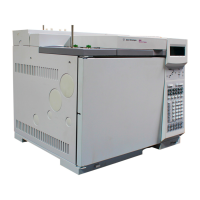
